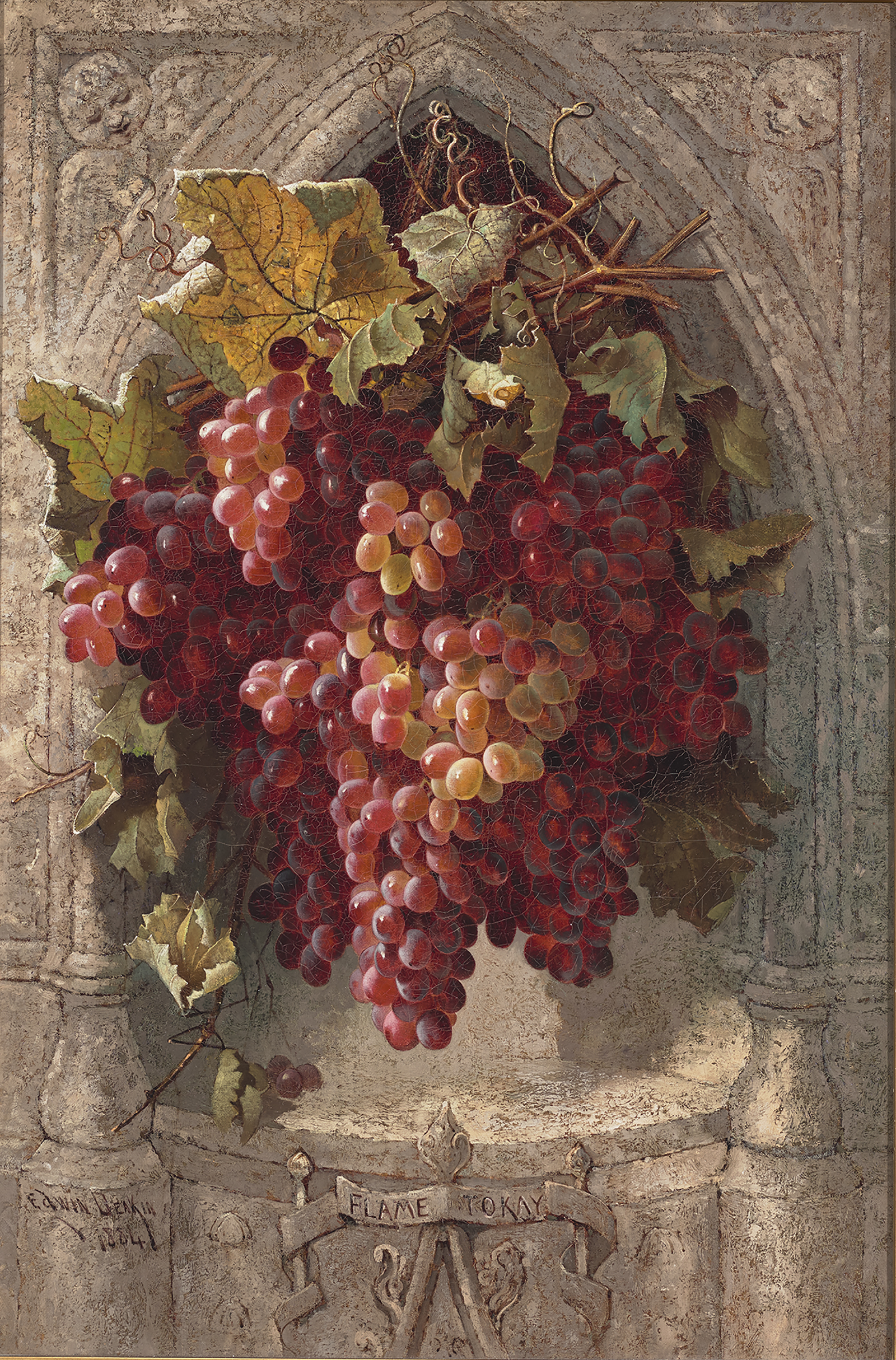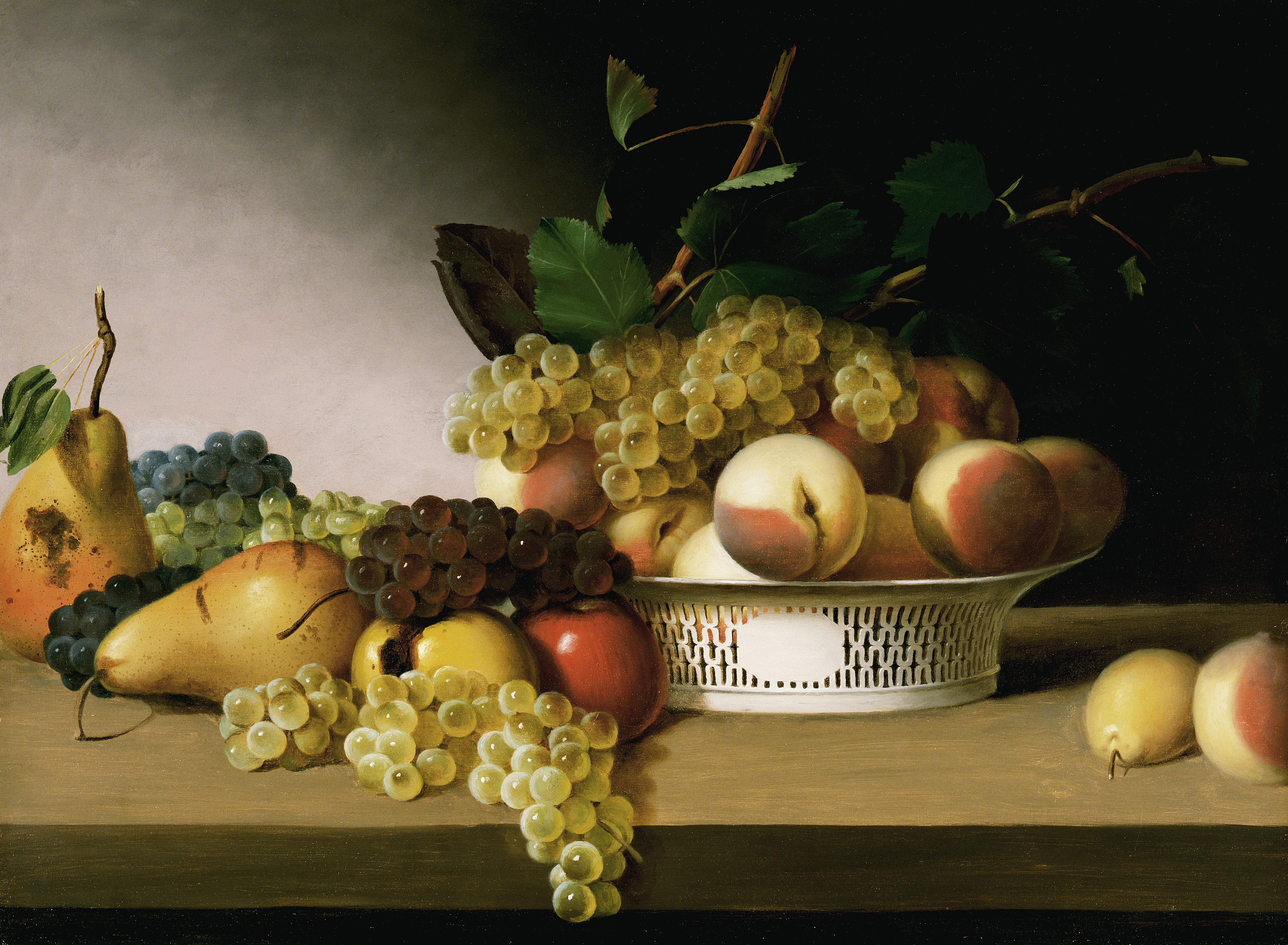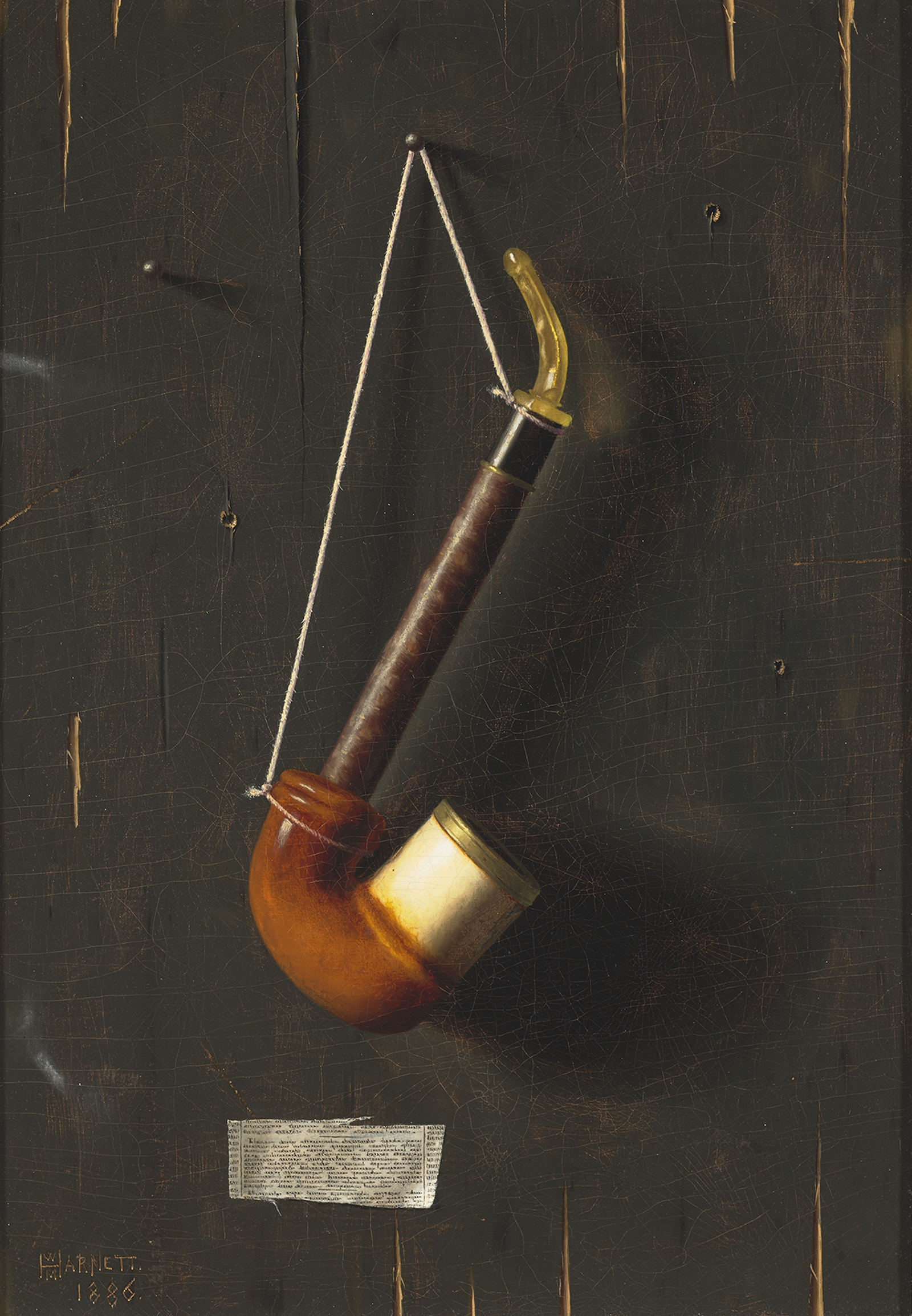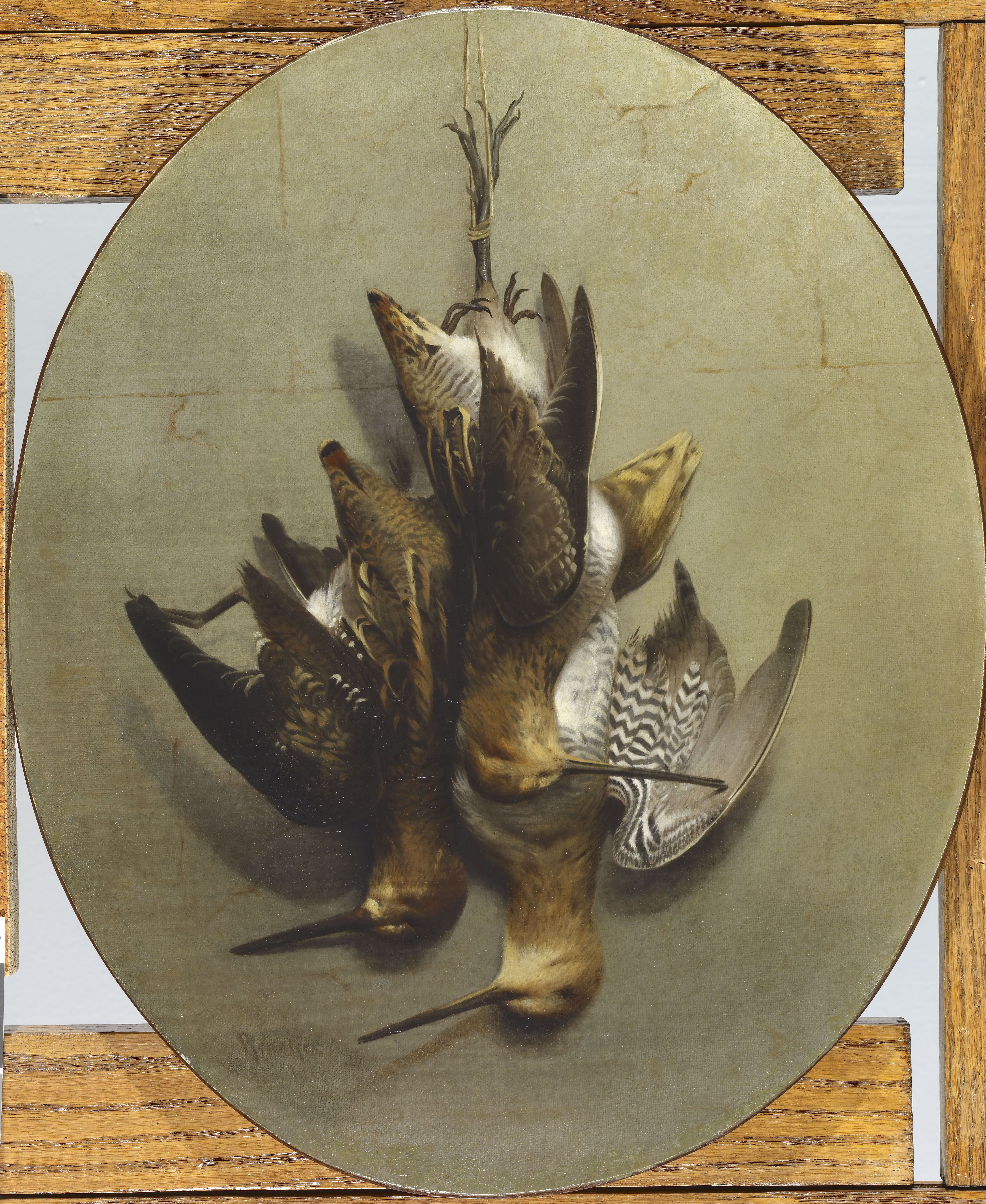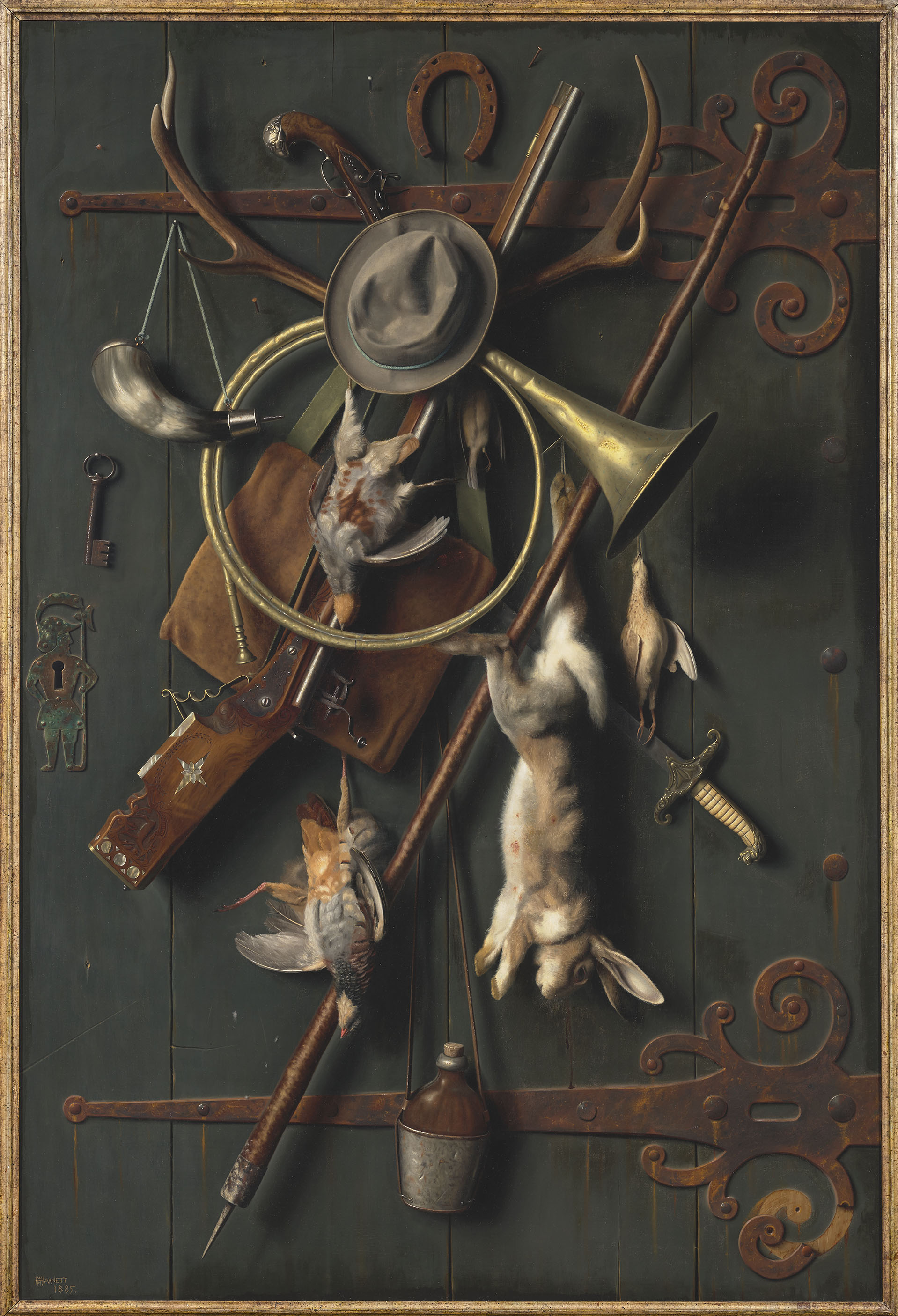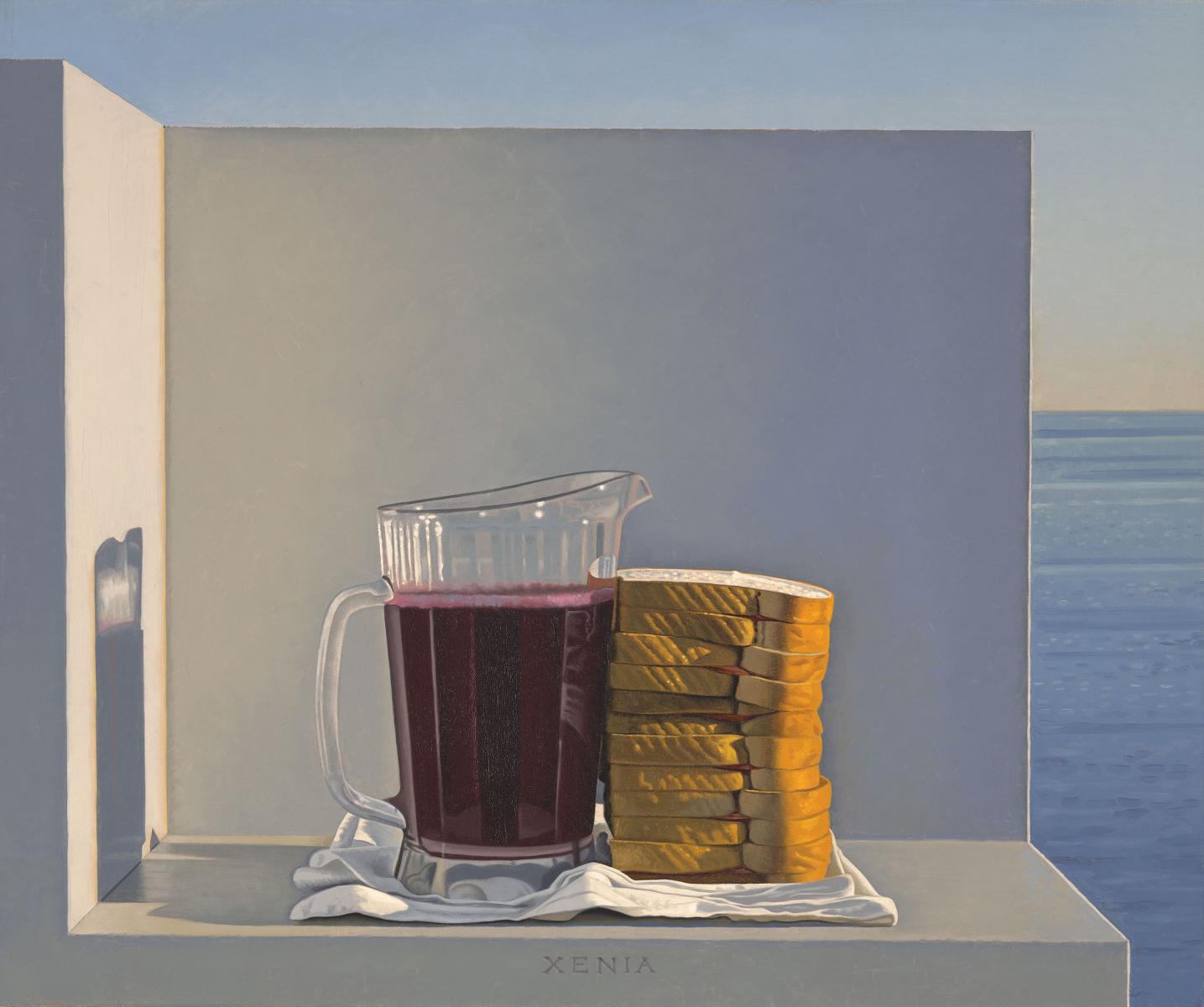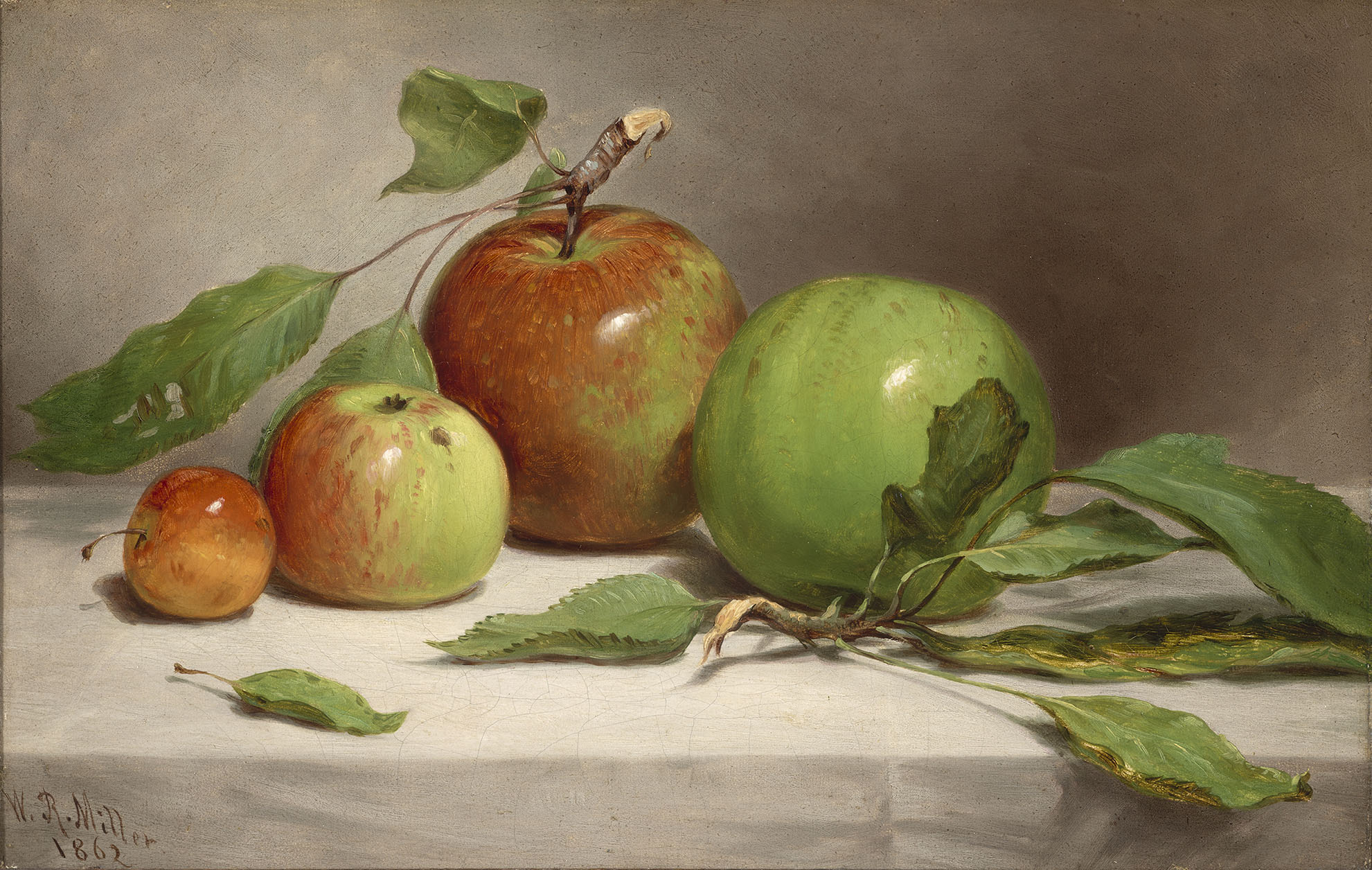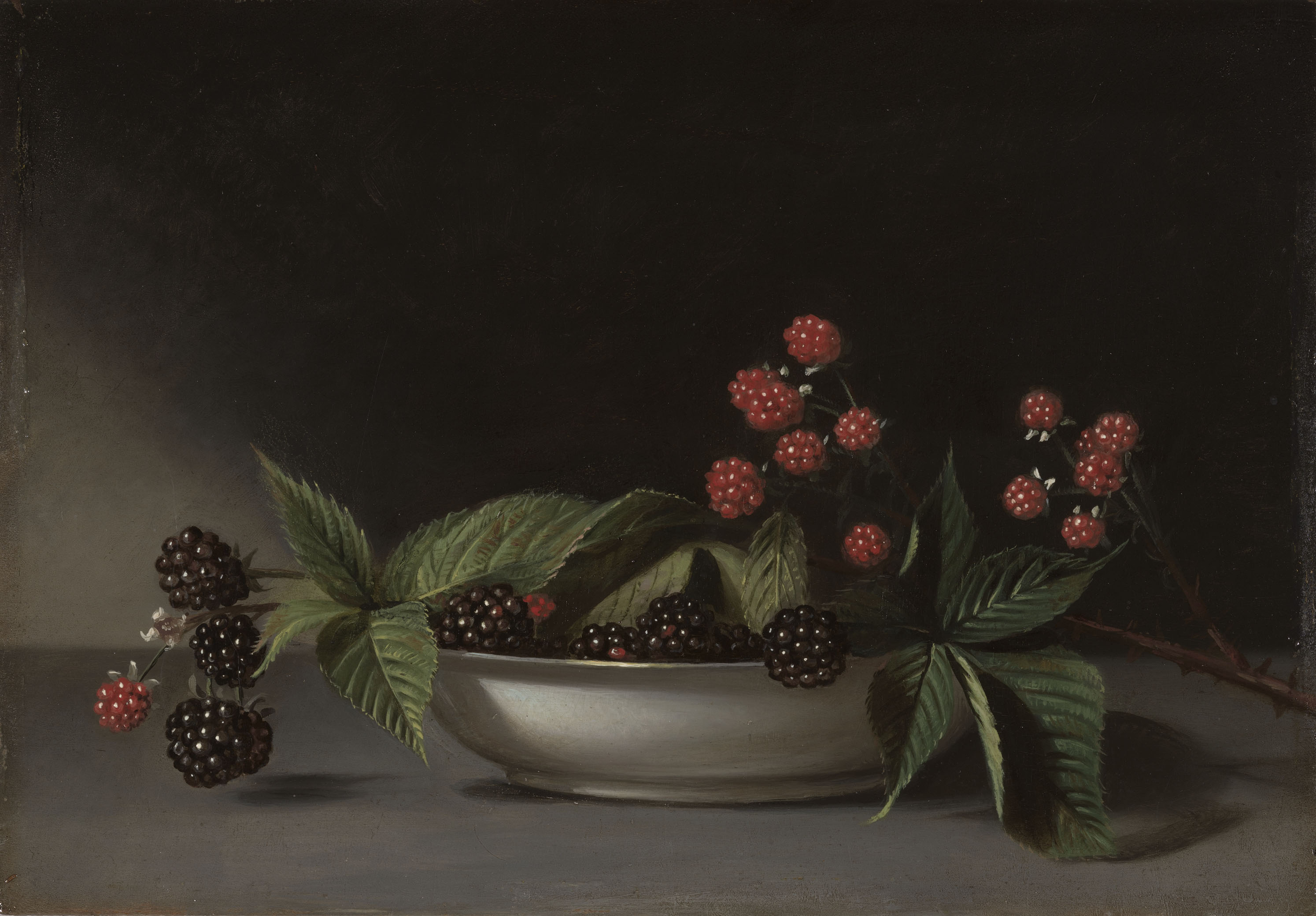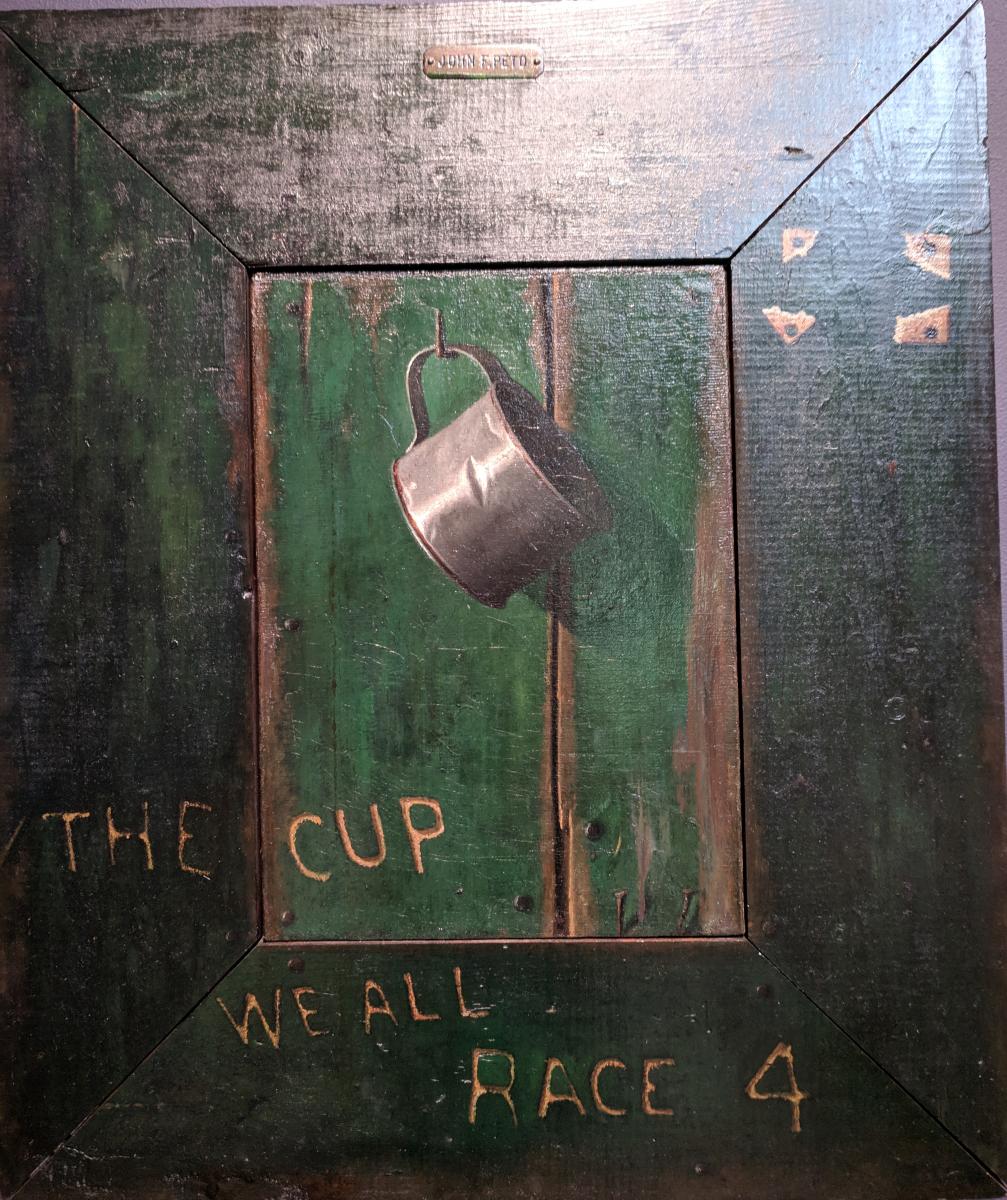Samuel Marsden Brookes in His Studio

Do you have to struggle to succeed?
When 33-year-old Deakin moved from Chicago to San Francisco in 1871, his older friend, Samuel Marsden Brookes, was already an established artist there. Here Deakin painted Brookes with a romanticized seriousness, set in a slightly ramshackle studio cluttered with half-finished canvases. The subject continues working uninterrupted on one of his signature fish paintings.
